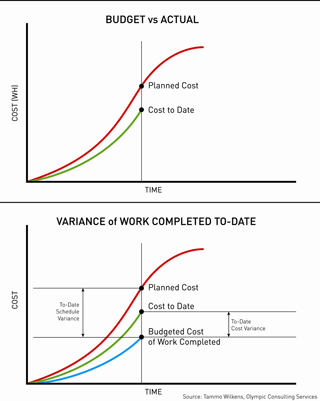|
Subscribe / Renew |
|
|
Contact Us |
|
| ► Subscribe to our Free Weekly Newsletter | |
| home | Welcome, sign in or click here to subscribe. | login |
Construction
| |
 |
March 29, 2012
Is your software holding you back?
Dexter + Chaney

Chaney
|
While the economy is slowly improving, construction companies are still struggling to find their footing as the ground is not as solid as it once was.
With costs and savings still a big factor in daily operations, companies are looking at every possible way to stretch their dollar. Because of this new economic environment, it can be hard to tell when it is feasible to upgrade your business management software; after all, making a poor purchasing decision regarding something that affects all aspects of your business can be extremely costly.
Time for an upgrade?
With slow and steady growth upon us, there are several factors a firm should look at when determining the right time to upgrade their business management software. First and foremost you must take a look at your cash flow. For example, can you easily determine if you are losing money to under-billed work or change orders?
Many construction companies find themselves in these or similar situations as they take too long to process transactions, or even worse, float cash from one job to another to cover expenses. If you are having problems determining your cash-flow issues, it might be time to look at new software that offers built-in controls and a clear view of the actual status of each of these issues.
Second, ask yourself if your business software is providing you with a clear picture of where you stand on all your projects. This means more than just tracking costs. Consider a job where you’ve incurred half of your projected costs at the halfway point of the schedule. At a glance, this could appear to be a healthy project. But if in reality only 25 percent of actual work has been completed, then a red flag should go up. For most contractors, their software is not providing these crucial alerts.
Finally, if your firm is struggling with the ability to connect field data with your accounting systems, you may need to start looking for a new solution that allows for greater remote accessibility and that has integrated features for both the office and field.
Now what?
Sorting through all of the different software out there can be overwhelming and time consuming.
Consider whether the software can take data from the field and the office to provide information on the real cash situation for all your projects.
Your software should be a tool that helps keep your projections close to your budgets and your actuals close to your projections. Your software should import estimates to create projections and change-order management, as well as allow field staff to view and enter information remotely.
Having these features provides seamless transactions between the field and the office and keeps you up-to-date on all job costs.
Having a reporting capability that lets you get the information you need within your software system is an obvious priority. But to be truly valuable, the reporting must be flexible. You should be able to start with good standard templates and then use built-in tools to modify reports to suit your particular needs.
Also, look for software that includes imaging capability where documents can be scanned into the software and linked to jobs. This feature dramatically reduces paperwork and provides easy access of documentation.
What else is important?
While each company will have their own list of “must have” items for their software that will help the flow of business, some things should not be overlooked when you begin your search for new software.
Accessibility translates to productivity, so consider how you and your staff will be using your software. Today, most software is still delivered “out of a box,” meaning you have to install it on the computers of the people using it and usually on a server as well.
If you expect your staff to be able to access your software from anywhere, anytime, and if you want to get off the treadmill of constantly upgrading hardware to accommodate more powerful software, then you should look for products that offer web-based deployment.
More and more business software is now accessible online, meaning all you need is an Internet connection and a web browser on virtually any device to access your system. And this does not necessarily limit you to subscription-only software. If you prefer to purchase a system, many vendors can still deploy the software for you, saving you both time and money.
Also, think about the type of support you will get when purchasing your software. Will your software provider be there for the different types of needs that might arise, or are they merely concerned with installation and then are not available for support later?
Make sure you take a look at the quality of support as well. We have all experienced our share of support agents that cannot go beyond the scope of the instructions written on their screen. That can be more than frustrating when trying to troubleshoot an issue. Ask to make a sample support call before you lock down on a software option, and be weary of vendors that say “no.”
In the end, your software should do two things: It should help save time and money by either allowing you to make more money, or by cutting your costs; and it should create more efficient processes by increasing accessibility. This means that everyone in the company should be able to communicate fluidly on each project.
If your software isn’t saving you money or simplifying your life, it’s time to look into new options.
John Chaney, CPA, MBA, is president and co-founder of Seattle-based construction software developer Dexter + Chaney. He is involved in development of the company’s construction management and project collaboration software, working with clients throughout the U.S.
Other Stories:
- Nurturing tomorrow’s construction leaders
- 2012 Construction Surveys: JE Dunn Construction
- 2012 Construction Surveys: Rushforth Construction
- 2012 Construction Surveys: Walsh Construction
- 2012 Construction Surveys: Pease Construction
- 2012 Construction Surveys: W.G. Clark Construction Co.
- Follow these 4 'safety truths' to reduce injuries
- BIM evolves into a safety tool
- Claims clauses: Mike Johnson case is here to stay
- One contractor’s trash is another’s office
- Contractors sidestep the bonding blockade
- Washington rolls out new crane regulations
- Succession planning begins at the top
- 2012 Construction & Equipment Surveys



